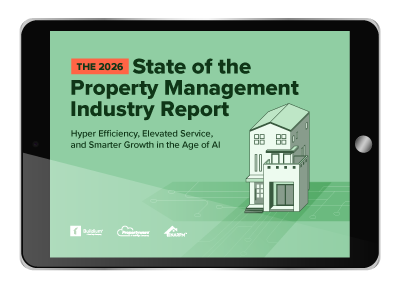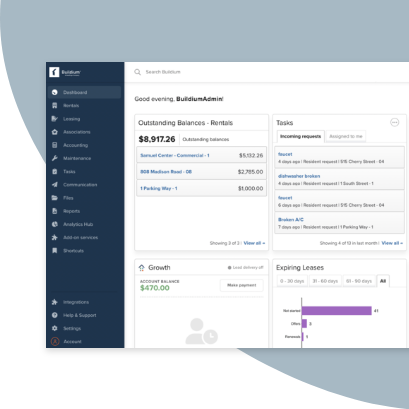Disclaimer: This blog post is meant for informational purposes only and does not constitute legal advice. Consult with a licensed attorney in California for specific legal guidance.
From its vibrant cities to its small, mountain towns, California’s communities offer a variety of rental options for tenants—and several different opportunities for owners and property managers to build a robust portfolio.
If you own or manage rental properties in California, however, one thing remains consistent: the need for a comprehensive lease that complies with local, state, and federal laws and regulations.
Understanding the intricacies of California lease agreements is important. The Golden State demands that property managers exhibit meticulousness and comprehensive knowledge when handling such contracts.
Let’s unravel the layers of a lease agreement, taking a look at their significance and how they stand apart in California.
Got a specific question on California lease agreements? Jump to our FAQ section at the end of this guide.
You can access a sample California lease agreement template through the “Download Sample Form” button above. Please consult your own legal counsel before offering a lease to residents.
The Significance of Lease Agreements for Property Managers
For any property manager, lease agreements are not just another document; they are the bedrock of your relationship with your tenant. These agreements protect both parties and clearly set expectations for the lease.
At their core, lease agreements outline the obligations, rights, and rules for both tenants and owners—as well as property managers representing their clients. They act as a reference point, a document that those involved can turn to when memories falter or disagreements arise.
When issues arise, a well-crafted lease agreement becomes the reference point to settle disputes. By solidifying terms and conditions in writing, it minimizes ambiguities and ensures smoother operations.
For property managers a comprehensive and state-compliant lease agreement can help property managers stand out in a highly competitive market. It tells tenants that you are organized, knowledgeable, and you prioritize a transparent relationship.
The Anatomy of a California Lease Agreement
While agreements may differ in specifics, several elements remain consistent in a California lease agreement:
- Parties Involved: Each agreement should list the owner or property management company and the tenant(s) clearly.
- Property Specifics: This section goes beyond just an address, detailing the property’s features and any included appliances or furnishings.
- Duration of the Lease: It’s important to specify the start and end dates of the lease, along with the details on renewing a lease. This clarity avoids overstays and aids in planning property availability for future renters.
- Financial Details: This not only includes rent and accepted payment methods, but details about security deposits (the amount, purpose, and conditions for its return), maintenance fees, late charges, and potential legal fees, as well.
- Maintenance Protocols: For maintenance and repairs, a clear division of responsibility prevents potential disputes. Tenants even have the right to withhold rent payments if certain property conditions aren’t met. The agreement should outline who is responsible for repairs and maintenance clearly. Doing this minimizes disputes. This is particularly important in regions prone to specific natural disasters, such as drought, wildfires, and earthquakes.
- Policies and Restrictions: These include guidelines about pet ownership, smoking policies, or even restrictions on business operations from the rented property.
- Consequences and Penalties: What happens if either party breaks the agreements listed in the lease? This section outlines the consequences.
- Terms of Termination: This section should list the terms under which a lease can be terminated by the tenant or the owner.
- Miscellaneous Provisions: Anything else, from guest policies to dispute resolution mechanisms, can be added to ensure clarity.
Understanding the Differences Between Lease Agreements
Lease agreements aren’t a one-size-fits-all type of document. Every state in the U.S. has its unique blend of laws and regulations, influenced by its economy, cultural and political influences, historical factors, and even its climate.
California has passed a number of laws and regulations that protect tenants’ rights. Let’s take a look at a few of them.
Rent Control: Introduced via AB 1482, California’s rent control regulations are a defining feature. Lease agreements must acknowledge and adhere to these, especially in cities such as San Francisco or Los Angeles.
Security Deposits: California’s legislature capped the security deposit amount to the equivalent of one month’s rent. There is a 21-day window for its return post lease termination, as well.
Mandatory Disclosures: California mandates numerous disclosures that owners must make to tenants. These range from potential environmental hazards to any past violent crimes on the property.
Bed Bug Disclosures: Unlike many states, California requires owners to inform tenants about any recent bed bug infestations and treatments.
Right to Entry: While owners do have rights, California ensures tenant privacy isn’t violated. A 24-hour notice is mandatory for most types of entries.
Eviction Protocols: Depending on the duration of their stay and the reason for eviction, protocols vary. For instance, non-payment of rent might require a shorter notice than ending a periodic tenancy without any specific cause.
Prop 65 Warnings: A signature California law, Proposition 65, requires owners of larger properties to warn tenants about the potential presence of harmful chemicals.
Build Your Own California Lease Agreement
As the property management arena in California continues to evolve, staying updated with the latest regulations becomes paramount. Lease agreements, far from static documents, need regular revisiting and revising. For property managers, these aren’t just contracts, but a testament to their commitment to the profession.
You can find templates for a sample California lease agreement here and, if you want an easier overall leasing process for both you and your tenants, take a look at what Buildium has to offer. Remember, when drafting a lease, always consult with your attorney.
Remember, a well-drafted lease agreement not only minimizes disputes but fosters trust, as well, ensuring long-term, fruitful relationships between property managers, owners, and tenants. In the competitive Californian market, such relationships are important to long-term success, making a deep understanding of lease agreements your most valuable asset.
At a Glance: FAQs on Creating and Understanding California Residential Lease Agreements
This FAQ aims to clarify the nuances of California residential lease agreements for property managers. Always consult legal professionals, however, when drafting or revising contracts to ensure full compliance with current laws.
What Is a Residential Lease Agreement?
A residential lease agreement is a legally binding contract between an owner and tenant, outlining terms and conditions of renting a residential property. It ensures that both parties are clear on their responsibilities during the rental term.
How Is a California Residential Lease Agreement Different from Those of Other States?
California has specific tenant-owner laws, including those on rent control, security deposits, mandatory disclosures, and tenant rights, which affect the content and terms of its lease agreements.
What Are the Mandatory Disclosures for California Lease Agreements?
California requires various disclosures, such as lead-based paint, Megan’s Law database notice, mold, bed bug infestations, flood risks, and past violent crimes on the property, among others. Read up on these disclosures in full and always consult a legal expert if you’re unsure what to include.
What Is California’s Stance on Rent Control?
In addition to a law that provides for statewide rent control, certain localities in California enforce rent control, capping annual rent increases and offering eviction protections. Property managers must be aware of local ordinances to draft compliant lease agreements.
How Much Can I Charge for a Security Deposit in California?
For unfurnished rentals, the maximum is two months’ rent. For furnished ones, it’s three months’ rent. However, for active duty military personnel, it’s limited to one month’s rent.
Is There a Specified Time Frame to Return Security Deposits in California?
Yes. Owners have 21 days after the tenant vacates to return the security deposit, provide an itemized statement for any deductions, and provide receipts for work done.
What Are the Requirements for Property Entry in California?
Owners must provide a 24-hour written notice before entering a tenant’s rented space, except in emergencies.
How Can I Legally Terminate a Lease in California?
That depends on the lease duration and reasons for termination. For periodic leases, a 60-day notice is typical. If a tenant breaches the lease, a 3-day notice to “pay or quit” or “cure or quit” can be served—but local and federal rules may apply, as well. You should always consult with legal eviction counsel before terminating a lease in CA.
How Should I Handle a Tenant’s Abandoned Property?
California law mandates owners notify tenants, giving them an 18-day chance (sent by personal delivery) or a 15-day chance (sent by mail) to reclaim belongings. If unclaimed, the property can be sold, and remaining funds after covering costs should be returned to the tenant. There are also some general guidelines you should follow regarding property that a tenant leaves behind.
What Laws Are There Against Tenant Discrimination?
The Fair Employment and Housing Act prohibits discrimination based on race, color, religion, sex, familial status, disability, or national origin. Your lease agreements and practices must be compliant. California localities and the state legislature have passed laws that provide additional protections against discrimination.
What Happens if My Tenant or I Break a Clause in the Lease Agreement?
The breaching party can face legal consequences, ranging from financial penalties to eviction (for tenants). It’s important to understand the specific breach and its legal implications.
How Can I Ensure My California Residential Lease Agreement Is Up-to-Date with Current Laws?
Consulting with legal counsel regularly will help ensure your lease agreements remain compliant.
Is It Necessary to Include a Clause about Maintenance and Repairs?
Absolutely. Clearly specifying who is responsible for what kind of repairs (major vs. minor) or routine maintenance prevents disputes and ensures the property remains in good condition.
How Do I Handle Evictions during Unforeseen Situations Like a Pandemic?
During special circumstances, like the COVID-19 pandemic, specific moratoria or regulations might be enforced that can temporarily change eviction rules. Always stay updated with state mandates and consult with legal counsel.


